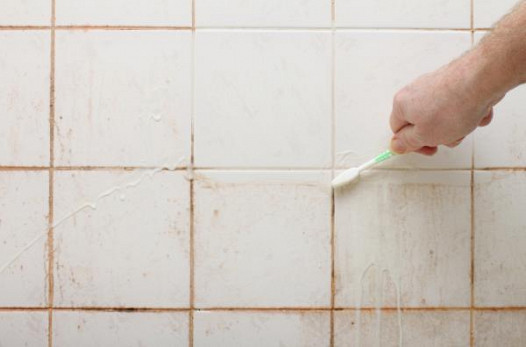Bathroom Water Damage - Ways To Stop This Happening
Bathroom Water Damage - Ways To Stop This Happening
Blog Article
Just about every person is bound to have their private notions involving How to Fix a Water Damage Bathroom.

The restroom is very susceptible for moist buildup as well as potential water damages because of the regular use of water in it. This write-up uses simple examination methods to aid finding water damage hazards.
The constant use of water in the bathroom makes it exceptionally susceptible for wet build-up and possible water damages. By inspecting it consistently, you can minimize water related problems.
The complying with collection of assessments is easy to execute as well as should be done when in every three months in order to maintain your restroom healthy as well as to stop prospective water damages triggered by the bathtub, the shower, pipeline joints and plumbing, sinks, closets, and the commode
Do not overlook executing these evaluations and also be thorough while doing them. Keep in mind that these basic inspections can conserve you a lot of cash by supplying early signs for water damage
Bath tub and Shower
The shower and also tub call for special attention as well as maintenance. Inspect the tiles as well as replace if split. Make sure that there is no missing out on grout in between the tiles. Check and change cracked caulking at joints where the wall surfaces meet the flooring or the bath tub. Blocked drains pipes and pipelines problems will certainly prevent the tub from drying out as well as might indicate severe problems below the bath tub. Speak with a specialist instantly to avoid architectural damage. Take notice of discolorations or soft areas around the bath tub walls as they may show an internal leak.
Plumbing
Signs for water damages are hard to discover given that most pipes are mounted inside the walls.
Pay special interest to floor covering and walls dampness and also stains as they may show an invisible plumbing problem. Inspect dampness degrees in adjoining spaces also.
Sinks and also Cabinets
Sinks and cabinets are subjected to wetness and also moisture daily as well as are commonly forgotten. Inspect routinely under the sink as well as on the counter top over it. Fix any kind of drip in the trap as it may suggest drain issues. Browse the sink, sluggish draining pipelines might show a blocked drain. Replace sink seals if they are broken or loose.
The Bathroom
The bathroom is a prone water joint. Inspect the water lines and also look for leakages around the commode seat, in the tube, and also under the water container. If you detect any signs of moisture on the floor around the toilet, check for leaks in the toilet rim and tank seals.
Realize that hanging commode dish antiperspirants raises the opportunities for obstructions.
TIPS TO PREVENT WATER DAMAGE IN THE BATHROOM
The average household uses approximately 80-100 gallons of water per person per day. For a family of 4, that's almost 2,500 gallons of water a week! The largest portion of this consumption comes from bathroom use. Flushing the toilet uses the most water, followed by taking a shower or bath. With that much water running through the home, water damage in the bathroom is bound to happen. Knowing how to spot signs of a water leak is essential to preventing long-term damage. This guide provides you with tips to reduce the impact of water damage on your bathroom.
CAUSES OF BATHROOM WATER DAMAGE
Pipe breaks are the most common cause of water damage we see in our daily jobs. The age of a pipe plays a large role in a pipe break as well as corrosion. Over time, the metal begins to break down, allowing water to escape. Frozen pipe breaks are also a concern in the winter months. Toilet overflows caused by paper products or children flushing inappropriate items. Degraded caulking around the toilet or bathtub can allow water seepage, sometimes behind the fixture, into the subfloor or walls. Condensation forms when the water in a pipe is cooler than the air temperature. Beads of water form on the exterior of the pipes, sometimes so much so that the water begins to drip and pool below. Sink or shower backups created by poor drainage. HOW TO PREVENT WATER DAMAGE IN YOUR BATHROOM
Inspect your toilet supply line for worn or frayed hoses and replace them as needed. Winterize your plumbing to prevent a frozen pipe break. Use vent fans to prevent condensation that can lead to mold growth. Routinely check and replace degraded caulking around your toilet or bathtub. Increase the temperature in your toilet tank and insulate your pipes during the warm summer months to keep condensation from forming. Use child safety locks on the toilets. Flush only toilet paper. "Flushable" wet wipes are actually not good for your plumbing system. Additionally, feminine hygiene products should not be flushed. Prevent water from escaping the tub or shower. Make sure shower curtains are in good condition. Inspect shower doors and replace the seal strip if necessary. Wipe up any water that accumulates on the floor and use bath mats. Water left to sit can cause damage to the tiles and flooring. Refrain from using bath products containing heavy oils to avoid a clogged drain.

We hope you enjoyed our excerpt about Looking for Signs of Water Damage in the Bathroom. Thank you for finding the time to read our blog post. Those who enjoyed our post plz be sure to share it. I am grateful for your time. Please visit our blog back soon.
Schedule Service Pickup Report this page